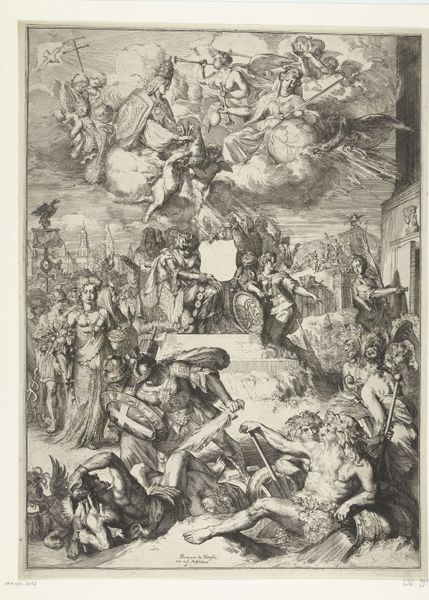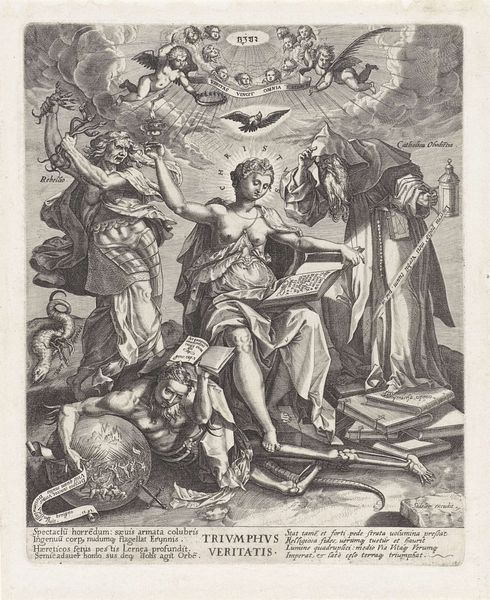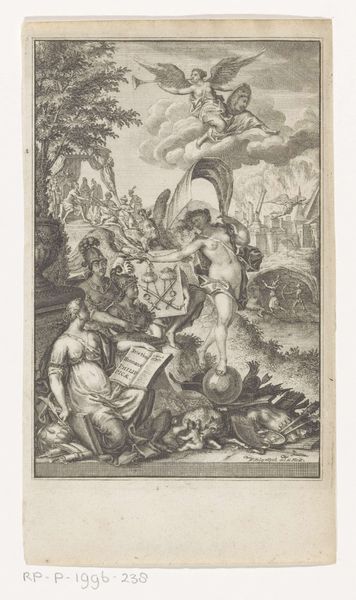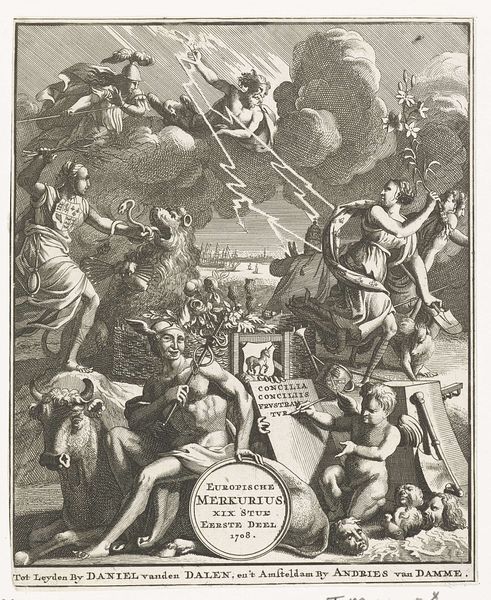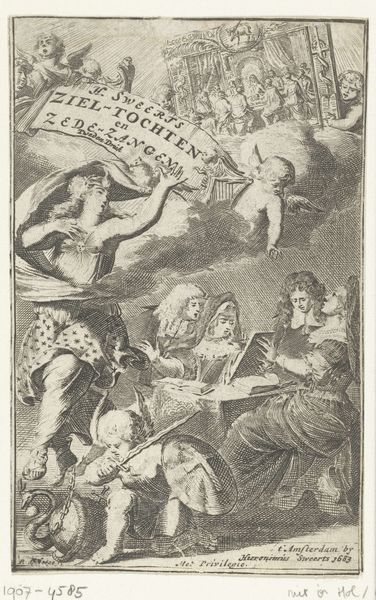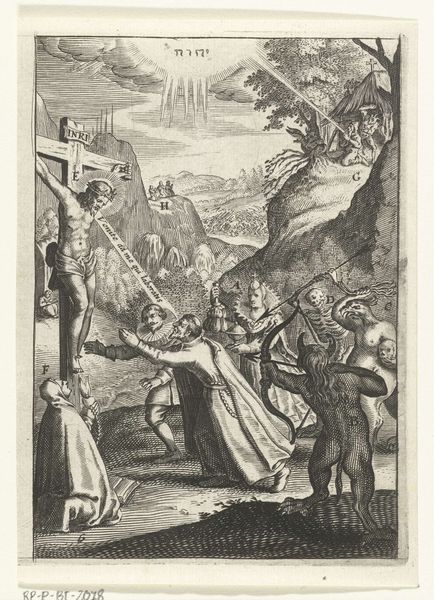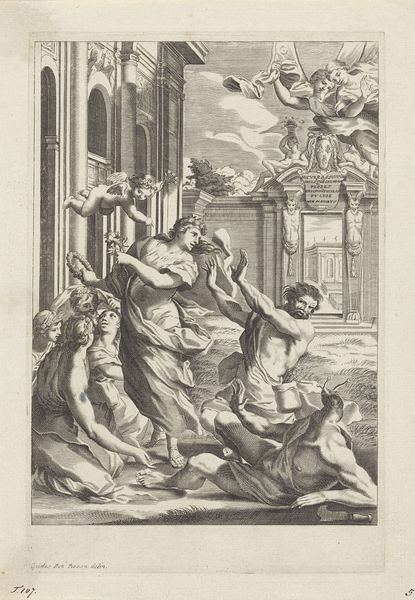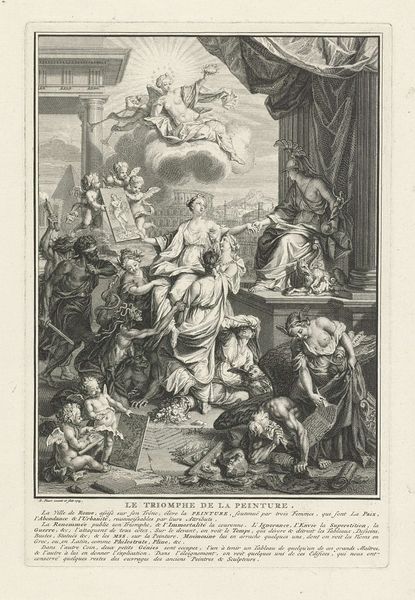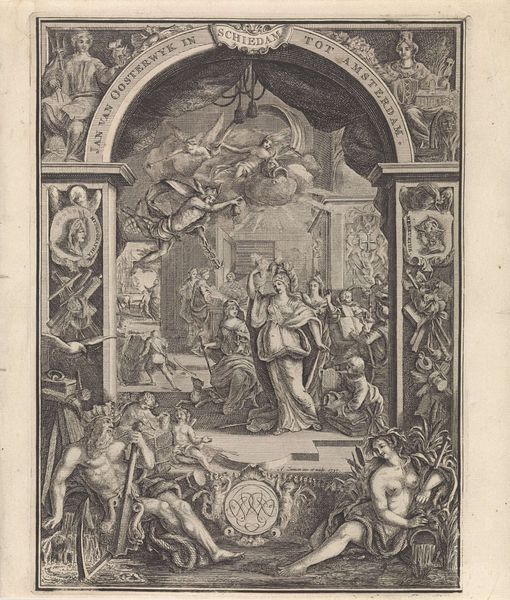
Allegorie met Waarheid, Geschiedenis en engelen met afbeelding van de tempel van Jeruzalem 1723
0:00
0:00
francoisvanbleyswijck
Rijksmuseum
etching, engraving
#
allegory
#
baroque
#
etching
#
landscape
#
figuration
#
line
#
history-painting
#
engraving
Dimensions: height 181 mm, width 137 mm
Copyright: Rijks Museum: Open Domain
Curator: Immediately, what strikes me is this tension between devastation and… ordered beauty. The contrast between the burning city and the meticulously planned garden is really disquieting. Editor: Indeed. We are looking at "Allegorie met Waarheid, Geschiedenis en engelen met afbeelding van de tempel van Jeruzalem," an engraving by François van Bleyswijck from 1723, housed right here at the Rijksmuseum. The scene offers a lot to consider. Curator: The burning city, I assume that represents the destruction of the temple? The fire, smoke—it’s pretty graphic, even for an allegory. Almost apocalyptic. Editor: Precisely. It’s a symbolic landscape of sorts, layered with meanings. The Temple's destruction is balanced against the ideal city depicted in the plan unfurled by the angels—a symbol of hope or divine order, perhaps. Curator: The angels, though... their faces are so serene! Almost detached from the drama unfolding. And the woman in chains—is that supposed to be Truth, shackled? Editor: She’s allegory personified. That enslaved figure could also represent captivity and loss; the engraving layers those narratives into a complex scene. You can almost hear the artist lamenting historical fate and destruction while seeking renewal. The baroque flourish underscores the intensity. Curator: And History is recording it all? What a heavy task. I almost feel sorry for her. All that trauma documented forever. The scene also makes me ponder historical accuracy versus symbolic representation. Editor: And consider what those choices mean for our own reading of history. Is it a factual record? Or is the emotional register more relevant to us centuries later? Curator: Looking at it this way gives it a contemporary feel, a conversation between catastrophe and resilience. Thanks to the detailed depiction. This pushes beyond typical historical accounts. Editor: Precisely. And considering how symbols evolve through generations, what does this mean for us today?
Comments
No comments
Be the first to comment and join the conversation on the ultimate creative platform.

